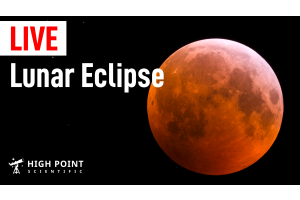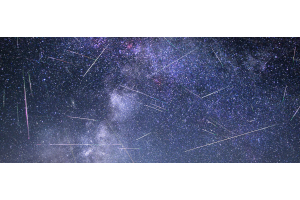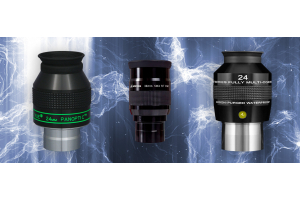
On February 29th, 1504, Christopher Columbus told the natives of Jamaica they had incurred the wrath of God for withholding food from his men. As proof of this, he also claimed that when the Moon rose that evening, it would be enraged. What Columbus knew - but the natives didn’t - was that a total lunar eclipse was due to occur at moonrise that night.
Hours later, as predicted, an orange-hued Moon rose, causing the natives to panic. They rushed to bring supplies, and as the eclipse ended, Columbus told them God had forgiven them. The natives didn’t know any better, but fortunately, five hundred years later, we now know the scientific reasons behind this celestial magic.
What is a Lunar Eclipse?
Eclipses top the list of many astronomers’ must-see lists. Unfortunately, while solar eclipses are breathtaking sights, inspiring awe and wonder in all who witness them, they are rare and fleeting, and require observers to stand within the narrow path of the Moon’s shadow in order to experience totality.
Lunar eclipses, quite beautiful in their own right, are more common, last longer, and can be seen by millions of people across the world simultaneously. So what is a lunar eclipse, and what can you expect to see?

A total lunar eclipse occurs when the Moon passes through the shadow cast by the Earth in space. As such, it can only occur at full Moon, as it requires the Earth to be between the Moon and the Sun.
Lunar and solar eclipses don’t happen every month because the Moon’s orbit is slightly tilted and, as a result, the three bodies are seldom perfectly aligned.
The good news is that a lunar eclipse occurs more frequently than a solar eclipse and totality will last a lot longer. This is because the Earth’s shadow is larger than the Moon, and covers a greater area of space. This being the case, the Moon has a greater chance of entering the Earth’s shadow and takes longer to pass through it.
For example, totality during a solar eclipse can only last for a maximum of seven and a half minutes, whereas totality during a lunar eclipse can last for a maximum of just over an hour and 45 minutes.
Since a lunar eclipse happens at full Moon, it also has the advantage of being visible from anywhere the Moon is visible. In other words, anyone on the night side of the Earth should be able to witness the eclipse - assuming the Moon is above the horizon, of course!
What Are the Stages of a Total Lunar Eclipse?

The Earth’s shadow has two parts to it, like a target made up of two concentric circles: the penumbra, and the umbra. The penumbra forms the outer circle and is much lighter than the umbra, the inner circle.
The eclipse begins as the Moon enters the penumbra. Occasionally, the Moon will only pass through this outer portion of the shadow, in which case a penumbral lunar eclipse occurs.
Penumbral eclipses are quite rare, and unfortunately, they’re not very spectacular. Since that part of the shadow isn’t very dark, the moonlight isn’t usually significantly dimmed, and you may not notice any change at all!
On average, a total lunar eclipse can last anywhere between four and six hours from start to finish, with both the penumbral and umbral phases lasting a little more than an hour. The penumbral phase is first, but as mentioned before, although the Moon’s light is dimmed, you may not even notice a difference.
The Moon then edges into the umbra, the central portion of the Earth’s shadow, and the Moon’s surface is darkened as a result. At this time, the eclipse is entering its partial phase, when only a portion of the lunar surface is within the Earth’s shadow. You’ll notice that the sunlit area of the lunar surface looks almost as bright as a normal full Moon, but when the Earth’s umbra hits the Moon it’ll appear coppery orange.
As with the penumbral stage, it typically takes the Moon slightly more than an hour to become fully immersed within the umbra. If the Sun, Earth, and Moon aren’t properly aligned, the Moon may only skim through the umbra, in which case a partial lunar eclipse occurs. When this happens, part of the Moon’s surface will appear orange, while the rest appears close to its normal brightness.
How Dark is the Moon During a Total Lunar Eclipse?
Totality begins once the Moon is fully immersed in the umbra portion of the Earth’s shadow. At this point, the whole of the Moon appears coppery orange, but the depth of the color will vary with each eclipse. On some occasions, the Moon can be so dark that it almost disappears from view, while at other times the color may be very light or almost non-existent.
This color change is due to the Earth’s atmosphere scattering blue light, but allowing the orange and red light to pass through. If there is a lot of dust in the atmosphere - for example, following a volcanic eruption - this can reduce the amount of sunlight being refracted and the Moon will appear darker still.
Since the Moon’s light is significantly diminished during totality, you’ll also notice more stars are visible compared to a night with a regular full Moon. This is because a regular full Moon brightens the surrounding sky, in much the same way the Sun brightens the sky during the day.
As a result, during the full Moon, the fainter stars become harder to see, or are drowned out completely, leaving only the brightest stars remaining.
To see this for yourself, go outside on a moonless night. Try to remember the brightest stars, and how many of the fainter stars are visible. Then, go outside again on the next full Moon and see the difference for yourself.

It’s a similar story during a total lunar eclipse. The Moon isn’t nearly as bright as it would normally be, and many of those fainter stars become visible again. Compare the number of stars you see before the eclipse with the number of stars you see during totality.
Unlike the penumbral and partial phases, totality can last anywhere between a few seconds and a few hours - it all depends upon how close the Moon is to the center of the umbra. For example, if the Moon simply skims the outer edge of the umbra, totality might only last for a few minutes, but if it passes right through the center, then totality could last for nearly two hours.
Totality ends when the leading edge of the Moon reaches the penumbra again. The eclipse then slowly ends as the Moon leaves the umbra behind and passes through the penumbra, before leaving the Earth’s shadow completely. Just as before, it typically takes a little more than an hour for the Moon to completely leave the umbra, and then slightly more than another hour for it to pass through the penumbra again.
Both solar and lunar eclipses can take hours to reach totality, but whereas a solar eclipse is over in minutes, a lunar eclipse gives observers the opportunity to savor the experience. There’s still a sense of awe and wonder as the Sun, Earth, and Moon align, like the inner mechanical motions of a celestial clock, and it’s easy to understand how ancient civilizations were fearful of these events. After all, if you didn’t know any better, what would you believe?

Learn More
Interested in learning more about what to expect from a lunar eclipse? Check out our Astronomy Hub!
This Article was Originally Published on 07/05/2022







